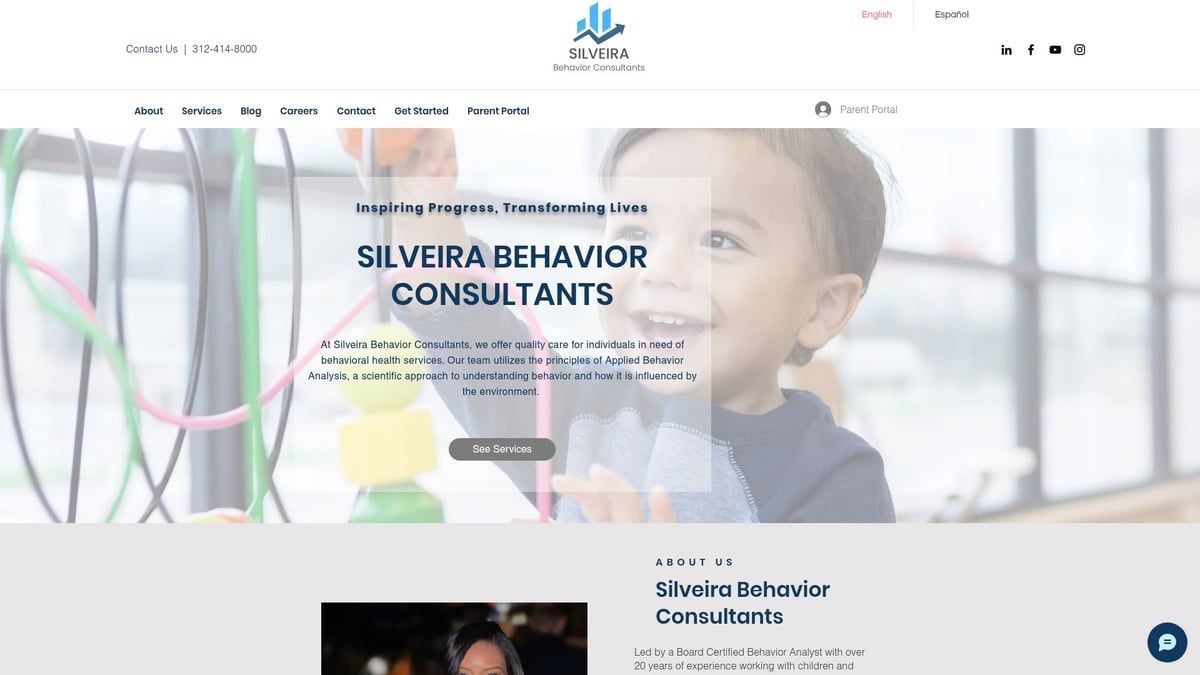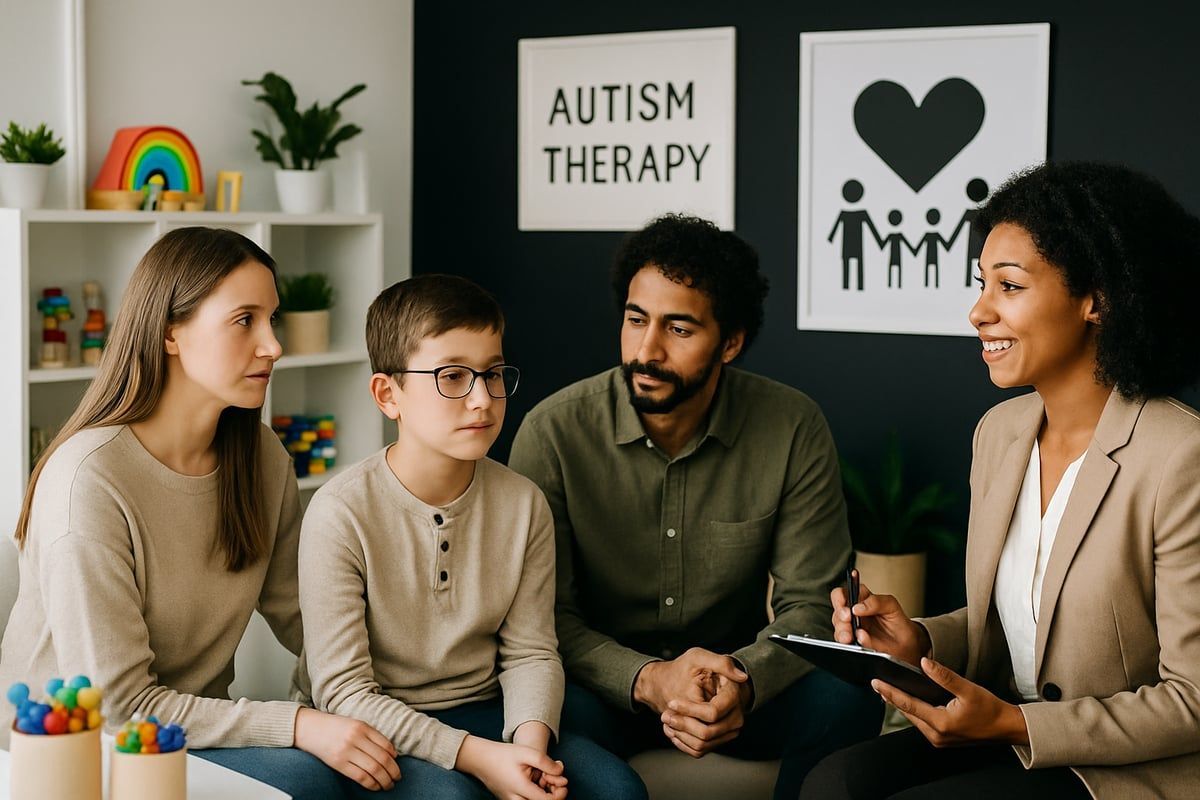Finding the Right Therapy Center for Autism in 2025
Finding the right support for your child can feel overwhelming, especially with so many therapy centers for autism emerging in 2025. Parents want the best care, but the question remains—how do you choose the right program?
This guide is designed to help families confidently navigate the process of selecting a therapy center. It shares the latest insights, practical advice, and proven steps to make informed decisions. Inside, you’ll discover new therapy trends, how to evaluate centers, what services to expect, and why family involvement is essential. With the right knowledge, you can advocate for your child and unlock their full potential.
Understanding Autism and the Importance of Early Intervention
Understanding autism and recognizing the importance of early intervention is critical for every parent exploring therapy options. In 2025, the landscape of autism support is more promising than ever, with advanced therapies and specialized centers offering tailored care. Timely action makes a world of difference. Research consistently shows that children who begin therapy early achieve greater gains in communication, socialization, and independence. By choosing a therapy center for autism that prioritizes early intervention, families can ensure their child builds strong foundations for long‑term success.

What is Autism Spectrum Disorder (ASD)?
Autism Spectrum Disorder (ASD) is a complex neurodevelopmental condition that affects how individuals communicate, behave, and interact with the world. No two people experience autism in the same way, which makes personalized care at a therapy center for autism essential. According to the CDC, about 1 in 36 children were diagnosed with ASD in 2023. Common signs include challenges with social interaction, repetitive behaviors, and differences in communication. Early indicators may appear as delayed speech, limited eye contact, or intense focus on specific interests.
ASD presents differently for every child. Some require significant support, while others may need only minimal assistance. This variability highlights the importance of therapy centers that tailor services to each family’s unique needs.
Why Early Intervention Matters
Early intervention can transform outcomes for children with autism. The brain is most adaptable in the first few years of life, so starting therapy during this window helps children build crucial skills. Research shows that children who begin therapy early often make greater progress in communication, behavior, and academics.
Real‑world examples reinforce this. Children who received Applied Behavior Analysis (ABA) or speech therapy before age three often show marked improvements in language and daily living skills. The sooner families connect with a therapy center for autism, the more opportunities their child has to thrive. Early services don’t just benefit the child—they empower families with hope and practical strategies. Early intervention lays the foundation for future success at home, in school, and in the community.
Overview of Therapy Options
A therapy center for autism typically offers a range of services to meet each child’s needs. The most common include:
- Applied Behavior Analysis (ABA): Improves specific behaviors using positive reinforcement.
- Speech Therapy: Builds communication skills, from basic sounds to complex language.
- Occupational Therapy: Supports fine motor skills, sensory processing, and independence.
- Social Skills Training: Helps children interact with peers and navigate group settings.
Evidence‑based therapies like ABA remain the gold standard, with over 80% of centers offering it. Many therapy centers use multidisciplinary teams to provide holistic support, ensuring all aspects of a child’s development are addressed.
Barriers to Early Intervention and Solutions
Families often face barriers when pursuing therapy, including long waitlists, insurance hurdles, or limited local resources. These challenges can delay critical services, but new solutions are emerging. In 2025, telehealth and hybrid therapy models are expanding access, bringing expert support directly into homes. Advocacy organizations help families navigate insurance and locate programs. Persistence and community support make a difference when seeking early intervention. Practical strategies include joining waitlists early, exploring multiple centers, asking about telehealth options, connecting with advocacy groups, and investigating state or private funding sources.
How to Choose the Right Therapy Center for Autism
Choosing the right therapy center is one of the most important decisions families make. With so many options in 2025, knowing what to look for helps parents feel confident and empowered.
Key Criteria for Evaluating Therapy Centers
Accreditation and licensing are essential. Look for credentials from organizations like the BACB or your state health department. Qualified staff, such as BCBAs and licensed therapists, are critical. Consider staff‑to‑child ratios, as lower numbers mean more individualized attention. Safety protocols should also be clear and robust.
Types of Therapy Centers and Service Models
Families can choose from clinic‑based centers, in‑home services, school‑based programs, or community‑integrated models. A growing trend in 2025 is hybrid delivery, blending in‑person and telehealth sessions for flexibility. Each model has pros and cons, so consider your child’s needs, schedule, and desired level of social interaction.
Questions Parents Should Ask
During tours or consultations, ask about treatment philosophy, parent involvement, and progress measurement. Find out how staff communicate with families and how often updates are provided. Watch for red flags such as vague answers, lack of transparency, or high staff turnover.
Assessing Individualized Care and Family Involvement
A quality therapy center creates personalized treatment plans tailored to each child’s strengths. Ask how family goals and cultural considerations are incorporated. Some centers offer bilingual services or employ culturally competent staff, ensuring care respects your values and background.
Understanding Costs, Insurance, and Funding Options
The financial side of autism therapy is crucial. Comprehensive ABA therapy may cost $62,400–$249,600 per year, though focused programs can be more affordable. Check if your insurance covers autism therapies, as many states have updated mandates for 2025. Ask about out‑of‑pocket expenses, copays, or deductibles. Some centers assist families in accessing grants, scholarships, or state programs to reduce costs. A transparent therapy center will guide families through funding and insurance options.
Silveira Behavior Consultants: A Model for Excellence in ABA Therapy
Silveira Behavior Consultants stands out as a therapy center for autism in Chicago, offering individualized, data‑driven ABA services. Their team provides culturally sensitive care, bilingual support, and flexible service settings to fit each family’s needs.

With a family-centered approach and affordable pricing, Silveira addresses core concerns for parents—making quality therapy accessible and effective for every child.
What to Expect: Services and Supports Offered by Therapy Centers
Choosing a therapy center for autism is a big step for families, but knowing what to expect can make the journey smoother. Today’s centers offer a blend of evidence-based therapies, family support, and progress tracking, all designed to help every child reach their full potential. Let’s explore the core services you’ll find in a high-quality therapy center for autism.
Core Therapies: ABA, Speech, and Occupational Therapy
At the heart of every therapy center for autism are three core therapies: Applied Behavior Analysis (ABA), Speech Therapy, and Occupational Therapy. ABA focuses on building positive behaviors and reducing challenges through structured sessions. Therapists use data collection and reinforcement strategies to track progress, making each plan highly individualized.
Speech therapy develops communication skills, ranging from first words to advanced conversation. Occupational therapy supports daily living skills, fine motor abilities, and sensory needs. Sessions typically run 30–60 minutes, several times a week, depending on each child’s goals. A therapy center for autism designs schedules that fit a child’s strengths and needs, ensuring every session is purposeful, engaging, and fun.
Social Skills and School Readiness Programs
Beyond core therapies, many centers offer social skills groups and school readiness programs. These group‑based interventions help children practice turn‑taking, making friends, and navigating classroom routines. Research shows that social skills training improves outcomes for nearly 68% of participants (Autism Journal, 2023). Transition planning ensures children are prepared for kindergarten and beyond, with skills for both learning and social interaction. Centers often use targeted activities, peer modeling, and real‑world practice to strengthen these skills.
Parent and Family Training (H2)
Family involvement is a cornerstone of success in autism therapy. Centers provide parent and family training to help caregivers reinforce skills at home and in the community. Training formats may include in‑person workshops, live in‑session coaching, and online modules or resources. These opportunities empower parents to manage challenging behaviors and celebrate progress. Studies link parent training to fewer behavioral issues at home and better skill generalization, making the journey more rewarding for the entire family.
Behavioral Management and Crisis Support
Every therapy center for autism prepares to address behavioral challenges with proactive strategies. Teams develop individualized behavior intervention plans that emphasize safety and consistency. Protocols for de‑escalation are in place to manage crises calmly and respectfully. Staff are trained to recognize triggers, apply calming techniques, and involve families in the process.
Consistency between home and the therapy center is crucial. Families receive guidance on implementing strategies at home, ensuring children experience steady support across all settings.
Progress Monitoring and Communication
Ongoing progress tracking is essential in autism therapy. Centers use digital tools and parent portals to share updates, data, and reports. Families can expect regular team meetings, goal reviews, and open communication channels. This transparency keeps parents informed and engaged. Frequent updates allow timely adjustments to treatment plans, ensuring therapy remains effective as needs change. Clear communication fosters trust and collaboration every step of the way.
The Parent Journey: Step‑by‑Step Guide to Getting Started (H2)
Beginning the search for the right therapy center for autism can feel daunting. Breaking the process into steps makes the journey manageable. Each stage—from intake and assessment to therapy implementation—brings families closer to the right support for their child’s unique needs. With guidance, transparency, and family involvement, parents can feel confident in their choices and empowered to advocate for their child’s growth.
Step 2: Understanding Your Child’s Diagnosis and Needs
Receiving an autism diagnosis can feel overwhelming. Reviewing your child’s assessment results carefully is essential, as they highlight strengths, challenges, and any co‑occurring conditions. These insights are crucial when selecting a therapy center for autism.
Identify your child’s unique needs—whether communication, behavioral, or sensory concerns—and begin building a support network. Parent groups, local organizations, and online communities provide resources and reassurance. Every child’s path is unique, and understanding your child’s profile helps you advocate for therapies that are truly individualized.
Step 3: Researching and Touring Therapy Centers
With a clearer picture of your child’s needs, begin researching therapy centers that align with your goals. Use online directories, read reviews, and ask for recommendations from professionals or other parents. Schedule tours and consultations to see centers firsthand. During visits, observe the environment, staff interactions, and safety measures. Ask about treatment philosophy, parent involvement, and progress tracking. Red flags include vague answers, lack of transparency, or high staff turnover. Taking time to compare options ensures you select a therapy center where your child feels safe, supported, and understood.
Step 4: Securing Funding and Navigating Insurance
Funding autism therapy can be challenging, but there are ways to make services more accessible. Start by contacting your insurance provider to verify coverage. Clarify which services are included and whether pre‑authorizations are required.
If a claim is denied, many families successfully appeal with supporting documentation. Explore additional resources such as state programs, grants, and scholarships. Some therapy centers also offer financial counseling or payment plans. Understanding your options helps secure high‑quality care without unnecessary financial strain.
Step 5: Enrolling and Transitioning into Services
Once you’ve chosen a therapy center for autism, enrollment typically begins with intake paperwork and an initial assessment. This allows the center to develop an individualized treatment plan tailored to your child’s strengths and needs.
Prepare your child for the transition by discussing what to expect and visiting the center together. Comfort items or familiar routines can ease anxiety. During the first few weeks, maintain open communication with staff and share feedback about your child’s adjustment. A thoughtful transition builds trust and confidence from day one.
Step 6: Collaborating with Your Child’s Therapy Team
True progress comes from strong partnerships between parents and professionals. Attend team meetings, participate in parent training sessions, and ask questions about strategies you can use at home.
Share updates about your child’s behavior outside the center—this information is vital for adjusting goals and interventions. Open communication ensures your child’s needs remain front and center, maximizing the impact of therapy and supporting lasting growth.
Maximizing Outcomes: Family Involvement, Advocacy, and Next Steps
Supporting your child’s growth at a therapy center for autism is a journey that extends beyond the clinic. Families, therapists, and schools working together create the strongest outcomes.
The Role of Family in Therapy Success
Family involvement is a game‑changer. Research shows that when parents actively participate, children learn skills faster and maintain them longer. Simple strategies like practicing social skills at home, using positive reinforcement, and involving siblings in play can make a big difference.
Advocating for Your Child’s Needs
Parents often serve as their child’s voice, ensuring they receive the right services. Advocacy includes navigating IEPs, collaborating with healthcare providers, and requesting adjustments when needed. Keeping records and building strong relationships with the care team helps guarantee your child’s needs are met.
Addressing Burnout and Finding Support
Caring for a child with autism can be rewarding but exhausting. Recognizing signs of burnout—such as fatigue or isolation—is important. Support may come from respite care, counseling, or connecting with other families. Taking care of your own mental health sustains the energy needed to thrive.
Planning for the Future
As children grow, therapy needs evolve. Planning ahead for transitions—such as entering kindergarten or moving to school‑age services—ensures continuity of care. Early discussions about vocational training, life skills, and long‑term goals prepare children for independence.
Staying Informed
Autism therapy continues to advance. Staying updated through research, webinars, and conferences ensures your child benefits from the latest developments. The more informed you are, the more empowered you become in advocating for your child.
Silveira Behavior Consultants: Partnering for Your Child’s Growth
At
Silveira Behavior Consultants, we’re committed to supporting families with personalized ABA therapy, flexible service options, and a team that genuinely cares about each child’s growth and happiness. If you’re ready to explore how we can help your child thrive, we invite you to
Inquire About Services and start the conversation today.






